I received an email recently, asking if I’d heard any updates on the Jamie Olson situation, the one I posted about in November. As you may recall, Jamie Olson is the USDA Wildlife Services trapper who posted about his wildlife “work” — with graphic images depicting his treatment of wolves and other predators, including pictures of his dogs mauling trapped animals.
The petition to fire Jamie Olson, started by Project Coyote, is still viable — with more than 52,000 signatures. Olson, despite these wretched acts and calls for his dismissal, remains employed by Wildlife Services while under investigation.
The Fox News exposé of Wildlife Services
This past week, Project Coyote posted an article on their Facebook page. It’s another — I will say horrifying but not surprising — exposé of USDA’s Wildlife Services, and the cruel practices regularly employed, condoned or tolerated within the organization. Cristina Corbin of Fox News covered this story: Animal torture, abuse called a ‘regular practice’ within federal wildlife agency. Here is an excerpt — the article’s opening:
It was a productive day for Gary Strader when he pulled his vehicle up to a remote site in northeast Nevada and found nine coyotes caught in leg hold snares set by the federal government. As was routine, Strader, a former trapper with the U.S. Department of Agriculture, signaled his dogs to attack.
His supervisor, who had accompanied him that day, watched and laughed as the dogs circled the coyotes and ripped into them, Strader recalled.
“That was regular practice,” said Strader, who in 2009 left Wildlife Services, a little-known program within the USDA.
And further into the piece:
Strader said he was often tasked with hunting for coyote dens while working for the government in remote areas of Utah and Nevada. He described how he would lower his stethoscope into the hole and listen for breathing or whining from the coyote puppies. Then he would drop a phosphorus bomb into the den and cover its opening with dirt.
These stories substantiate what Tom Knudson meticulously documented in his three-part series for the Sacramento Bee last year: The killing agency: Wildlife Services’ brutal methods leave a trail of animal death.
An excerpt from Knudson’s piece:
- With steel traps, wire snares and poison, agency employees have accidentally killed more than 50,000 animals since 2000 that were not problems, including federally protected golden and bald eagles; more than 1,100 dogs, including family pets; and several species considered rare or imperiled by wildlife biologists.
- Since 1987, at least 18 employees and several members of the public have been exposed to cyanide when they triggered spring-loaded cartridges laced with poison meant to kill coyotes. They survived – but 10 people have died and many others have been injured in crashes during agency aerial gunning operations since 1979.
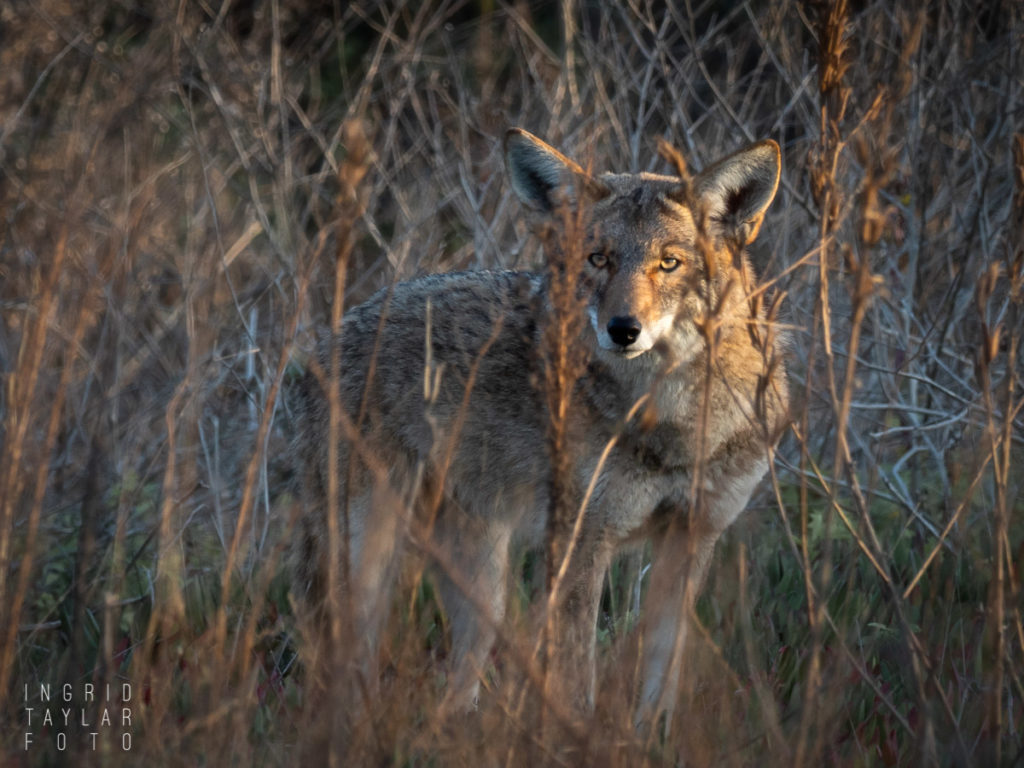
Please post and re-post these stories
In a cursory search of my local agencies here in Washington, I found — within the span of just a few minutes — several contracts with USDA Wildlife Services, for operations such as “waterfowl management,” with no other specifics given except the contract date and service fee, which ranged from $2000 to $130,000. I mention this because, many municipalities and agencies use Wildlife Services for their default wildlife control operations. Those services can entail many facets, including non-lethal studies and measures. As one example, airports often employ multi-faceted programs which include trapping and relocating of raptors along reduction of habitat and food attractants (in addition to lethal controls). But often, lethal measures as the default recourse are accepted without question, or, community members are not aware which measures are being used locally.
I urge my fellow wildlife advocates to recirculate these stories about Wildlife Services — to make it widely known how taxpayer dollars are being used and squandered in the context of these egregious wildlife practices. The more people who understand what’s going on, the better the chances are that individual cities, municipal authorities, and communities will stand against these unacceptable acts, and move toward reform — and toward humane plans of co-existence with our fellow travelers — the coyotes, the wolves, the raccoons, the gulls, the prairie dogs and the many other species now targeted as “varmints” through abusive and backward methods.
City of Davis severs ties with Wildlife Services
Last year, the city of Davis, California severed ties with Wildlife Services, terminating the city’s contract with the agency while seeking non-lethal options for dealing with wildlife-conflict issues. This measure came on the heels of a Wildlife Services coyote killing operation in Davis, and also in response to Tom Knudson’s Sacramento Bee article.
[Davis Mayor Joe] Krovoza cited those articles in his motion to end the city’s financial ties with the agency.
“One would think a story like this comes out … and maybe they talk to their employees … (and) be a little bit more sensitive to the communities that they are serving. And that hasn’t happened. I think they’ve got a deaf ear to what’s going on.”
Wildlife Services officials were invited to Tuesday evening’s emergency meeting, but did not attend.
Project Coyote advocates for co-existence
Project Coyote is one of the organizations diligently pursuing and contributing to these stories, while working toward co-existence plans for predators like coyotes. They have regular updates at both their website and on their Facebook page if you’d like to keep up with the news. They have a “tips card” you can order, listing basic practices for co-existing with coyotes, along with other educational materials on that same topic at the Project Coyote Resources page.
Predator Defense promotes non-lethal predator control
The nonprofit Predator Defense is a critical player in the fight against inhumane practices toward wild predators. You can see a list of their various accomplishments on their History and Milestones timeline. They also have a resources page devoted to The USDA’s War on Wildlife which includes links to media pieces on this issue. They post regular updates on Facebook page.
Congressional pressure on Wildlife Services
Rep. Pete DeFazio (D-Oregon) has been outspoken about investigating and defunding Wildlife Services. You can read about the joint effort between DeFazio and Rep. John Campbell (R-Irvine) in this Modesto Bee article from June of last year: Congressmen call for investigation of Wildlife Services agency.

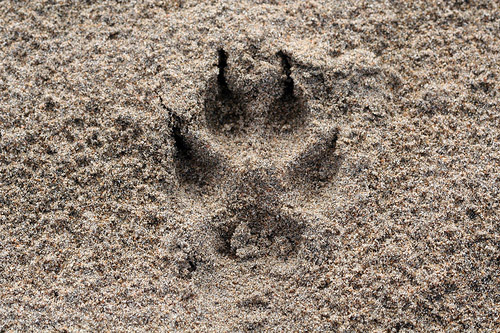
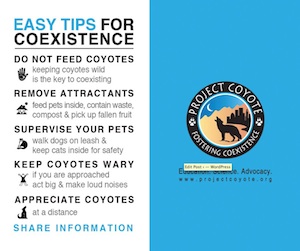
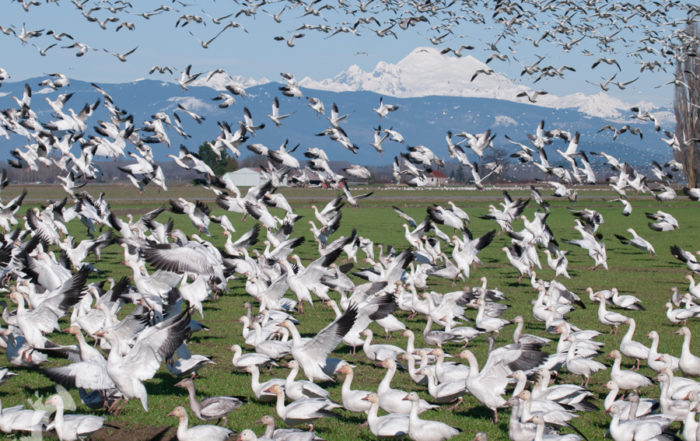
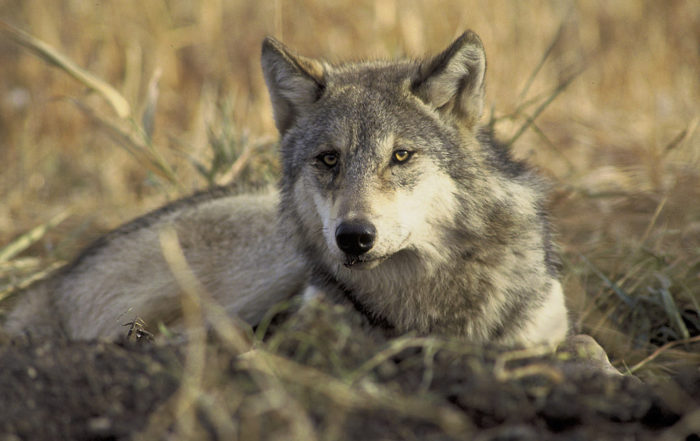
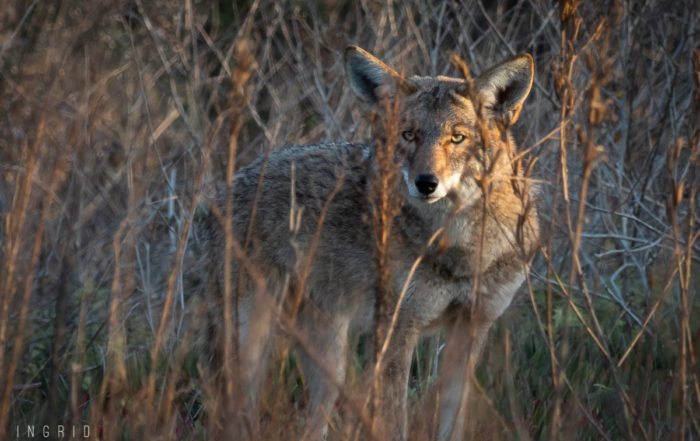
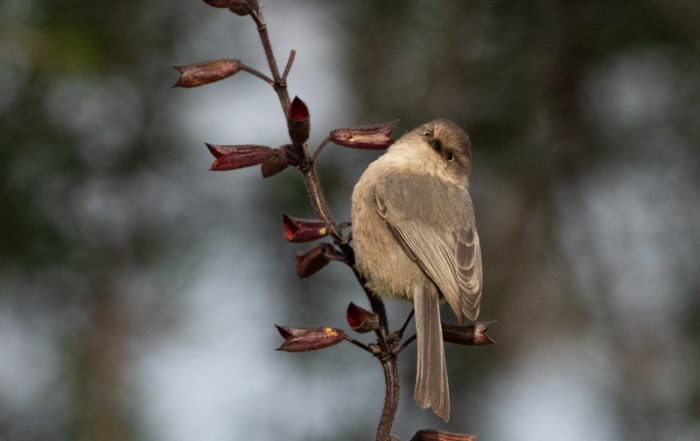
This is breathtaking and bewildering. That these poor creatures are subjected to predation by humankind is no shock, but that it comes in the guise of animal welfare is truly abhorrent. What can be done?
Thanks for the comment, Louise. Sadly, the name Wildlife Services doesn’t fully encapsulate what these “services” have historically been. It’s an important development that these practices are being exposed in mainstream media outlets. There are committed wildlife advocates pressing for better and more evolved ways to deal with and co-exist with our fellow nonhuman animals. As difficult as some of these stories are to read, I hope they continue to ripple through public consciousness in a way that ultimately brings significant change.
I just signed the petition to fire Olson. This whole issue stems from the meat eating industry and the privatization of so much land. Just how much “land” can a rancher have??? How come you can simply have so much “land” and continue to be a “rancher”? Just because it’s a money making industry? I see the only way to morally fight this is to become a vegetarian.
Maria, I agree. I personally don’t eat meat for that reason and for many others. But, at bare minimum, I think it’s important for people who care about wildlife to at least understand the connection between the beef industry and wildlife extermination. I wrote a post about that back in November.
That unfortunate connection has never been so clear as in the western wolf “hunts” we’re seeing — where 50 percent of Idaho’s wolves were eliminated in a year (as one example). Here in Washington, the entire Wedge wolf pack was exterminated by the Washington wildlife department, essentially, at the behest of one rancher — a rancher who, incidentally, refused offers of non-lethal control means like range riders.
In that November post I mentioned, I linked to a video featuring George Wuerthner, discussing the various environmental impacts of animal agriculture. He’s speaking to a vegetarian society in Portland, so there are undoubtedly people who would take issue with that presented bias. I found many bits of information that I previously did not know … especially the effects of grazing cattle on riparian areas and fish nurseries. The video link: https://vimeo.com/29989350
It’s true – As long as there are cattle ranchers there will be enemy “predatory” nonhuman species to “control” and exterminate. Twice as vile is when states and communities actually profit from doing so as in exploiting and killing horses and wolves. I don’t know… I think I read somewhere that coyotes are worth $5.00 – dead.
Of course I’ve had these groups in my on-line social circles – And I try to tell as many as I can that if they love wildlife… They’ll consider a plant based diet. Thanks for spreading the word too.
Thanks for that video link again Ingrid. Unfortunately, all this also seems to stem from political issues. I see the pitfalls of capitalism here. All the money that these industries make is not even going towards feeding the poor countries; it’s going back to its company owners; to make THEM richer. Just why is all this cattle all of a sudden needing to graze all over the place. It goes back to the landowners. Monarch Butterfly’s migration has declined dramatically because of the herbicides that were sprayed on their milkweeds. The milkweeds are poisonous to cattle so they had to be controlled. So on the question of how much land can someone really own in the U.S., I suppose it has to do with how economically successful these industries become; and their inevitable expansion regardless of any wildlife living anywhere? Thanks so much for that video link again.
Maria, it’s astounding how much land clearance and habitat alteration occurs for the purpose of grazing. There are programs promoting more rotational grazing, although that practice is not without controversy either. You can educate me on this a bit more. Isn’t the milkweed situation also one where the potential effects were overstated, and there has been indiscriminate elimination of all milkweed, despite variations in the plants and their toxicity levels?
The article that I read yesterday didn’t say there was a mass eradication of milkweed, it said the milkweed availability is down 58% (BBC MUNDO Ciudad de Mexico, this article came out in Spanish). Mexico is saying that they’ve protected their areas but now it’s up to the U.S. and Canada to do their part. The article from Mexico is totally different from the article here: https://nbcnews.to/Z0Q312 Apparently Mexico DID do some damage to some of their forests in Monarch migration areas, but in the Spanish article they don’t even mention it. They mainly say it’s due to climatic change and the milkweed eradication. The two articles differ greatly. But according to the WWF the butterflies covered just 2.93 acres (1.19 hectares), down from 7.14 acres (2.89 hectares) last year (a 59% less butterfly coverage). How much milkweed was actually eradicated I really don’t know. Apparently Canada is also involved in this. I’m going to investigate further the levels of toxicity each species have and how much a cow has to eat to die from it. They make it sound like there’s just so much of it, however, it’s hard to believe. How can there be so much milkweed to kill so much cattle??? Let me see if I find something.
The Wikipedia article states: “Milkweed is toxic and may cause death when animals consume 10% of their body weight in any part of the plant. Milkweed also causes mild dermatitis in some who come in contact with it.”. I read more about it and cattle usually avoid milkweed unless there is simply nothing else to graze on.
The FDA has a Poisonous Plant Database which links with the USDA GRIN Taxonomy of plants https://www.accessdata.fda.gov/scripts/plantox/index.cfm
Here you can look up plant toxicity by individual plants, but I’ve also noticed each state has its own list too, if you google plant toxicity by state. The FDA and USDA sites are quite confusing to navigate, if you ask me. And almost all weeds are listed as noxious. The issue with milkweed is the milky sap which contains a complex mix of chemicals, some of which are steroidal heart poisons known as “cardiac aglycones”. It’s supposed to be very distasteful, even to cattle. Yet this poison is not in its flower nectar, nor in the flower themselves, it’s only in the stems and leaves, so hummingbirds and other birds love its nectar and do not get poisoned; yet both the Monarch larva and butterfly carry the aglycones in their bodies.
This site is also helpful: https://www.ansci.cornell.edu/plants/index.html
This kind of thing keeps me from sleeping at night. Literally. Great post, Ingrid. I just signed the petition.
Me, too, Ron. Although I’d never want to turn back my understanding, with the awareness comes the corresponding distress. I view everything now in terms of its potential to help or harm.
Thanks for posting this update Ingrid. I am glad the City of Davis fired this organization. If more organizations knew what “Wildlife Services” does, I think there would be many more firings. Alerting the general public certainly helps as well.
Great post Ingrid, I had already signed the petition.
Maria, quite often “ranchers” lease or use public land for grazing, for instance BLM land, or Bureau of Land Management of which there is plenty out here in the western US. So the ranchers have their cattle on public land and complain about predators after which Wildlife Services step in to exterminate the predators like Coyotes. Often times they will say it is to save deer for tourism which is a load of white wash. Coyotes only take the old, weak and very young which is all part of a “natural balance”.
Wildlife Services are also exterminating “nuisance” birds for farmers who claim they pose health risks or economic damage using a program called “Bye Bye Blackbird” using an avicide called DRC-1339 which does not only kill the target birds but can (and does) kill non-target species such as raptors that ingest the poisoned birds. DRC-1339 causes sever renal failure and a slow painful death, I’d hardly call that humane.
Oops, meant to post a link to a blog article I did about the Bye Bye Blackbird program: https://www.onthewingphotography.com/wings/2011/01/30/bye-bye-blackbirds/
I don’t mean to get political about this issue, but even this leasing of public land for grazing can be seen as a secomdary gain for the ranchers themselves, owners, or whoever they are. So the government in part subsidizes this grazing. What I probably meant to say in my first post was in reference to large scale cattle industries . I am positive small scale ranchers have capabilities to learn to co-exist with wildlife. I think “homesteading” is a smart move, but perhaps even more so for vegetarians. Perhaps the whole issue with homesteading is precisely the amount of ranchers that do it and flourish. They immediately want cattle, so who says “no” to them??? They bought the land, so they can do what they want with it. And just how much land they can buy? That is the question.
Mia, I concur entirely about Bye Bye Blackbird and many of the questionable practices. It astounds me the degree of liberty Wildlife Services and other “extermination” practitioners have in terms of what they do to individual animals, and what poisons they apply, wreaking havoc on the ecology as a result of their indiscriminate killing.
The poisoning of birds is, in my view, unconscionable. I’ve witnessed quite a few wildlife poisonings and have, in a few cases, rescued wild animals who were in the throes of poisoning, so far gone by the point I got them, that nothing could be done. Not only is it a dastardly thing to do to any living creature, it is, as you say, a significant environmental problem as non-target animals are killed, and poisons work their way into the habitat and up the food chain, bio-magnified as meso and higher predators ingest the poisoned animals.
There’s a new group, launched out of the Bay Area, called Raptors are the Solution. They’re trying to get anti-coagulant rodenticides off the market, for all of the harm they do: https://www.raptorsarethesolution.org
I meant to add … the wildlife rehabilitator who helped me with rescued animals when we lived in Los Angeles (before I became a licensed rehab volunteer myself) was on site for a massive ground squirrel poisoning. She was trying to rescue and also clean up a situation where poison was illegally applied by an exterminator, in an area near the ocean. I can’t remember which type of poison it was, but it was absorbed into her skin through incidental contact, and she suffered some health problems as a result. I’m not sure if she was ever able to prove the exposure was related to the health problems because you know how arcane the studies can be in terms of direct correlation. I cringe to think how many of these products and poisons have been applied and are even illegally applied for “pest” and “varmint” control services.
Maria, regarding homesteading in the US: When did homesteading end?
Homesteading officially ended on October 21, 1976 with the passage of the Federal Land Policy and Management Act of 1976. On that day, all homestead laws were repealed nationwide, however, a 10-year extension was allowed in Alaska since it was a new state with fewer settlers. The last time anyone could file any type of homestead claim in Alaska was on October 20, 1986. After that day, no more new homesteading was allowed on federal land in Alaska.
BLM land is owned by the public, they lease the land in most cases for domestic animals to graze on but they do not build houses, barns or buildings on it.
Of course there is a gain for the ranchers to use public lands to graze their animals but that grazing also depletes the natural resources that existed prior to grazing that native wildlife depended upon. The double whammy is that then Wildlife Services comes into control predators at the expense of the public. There are large ranches that have hundreds of thousands of acres that they themselves own and that do not lease or use BLM land.
It’s probably in the west though. There’s seems to be a “craze” over homesteading in other states, however. I’m precisely following a blogger that’s doing it. Are you sure? She even links you with books about ALL sorts of homesteading. I only favor it for the growth of vegetables and prople who know what they’re doing and getting into. Do you think homesteading is really negative?
Broadly defined, the use of the word homesteading today is a lifestyle of self-sufficiency. It is characterized by subsistence agriculture, home preservation of foodstuffs, and it may or may not also involve the small scale production of textiles, clothing, and craftwork for household use or sale but not to be confused with the Homestead Act.
Thanks for that, Mia. I just tuned into the conversation and I was going to make the same distinction. Is that what you’re referring to, Maria? There’s a whole “neo-homesteading” movement that has, basically, saturated the Internet with personal blogs about going back to the land, slaughtering your own food and feeling more authentic because of it. (Sorry, I’ve grown a bit jaded about what I’ve seen with respect to treatment of animals in some of these situations. But, there are obviously legitimate reasons for why this movement came about, including people concerned about moving away from industrialized food systems.)
(Sorry, I’ve grown a bit jaded about what I’ve seen with respect to treatment of animals in some of these situations. But, there are obviously legitimate reasons for why this movement came about, including people concerned about moving away from industrialized food systems.)
Yes, that’s precisely what I meant, the “neo-homesteading”, or some just keep on calling it “homesteading”, there’s also “urban” homesteading, all sorts of flavours. I just hope the young homesteaders know what they are doing. They start bringing in cows and hens. They can shoot wolves and coyotes just as well. They also can buy as much land as they want, or not? The whole issue of public land grazing is complicated, and I’m sorry the top predators had to pay the price for the cruel culling going on, and as I said before, the only way I can morally fight it is by beimg vegetarian, which I am, and the suggestion to modernize the USDA Wildlife “management”. The whole conflict is over meat and food prodiction, and sick minds like Olson’s. Thanks Mia for explaining all this so clearly.
Maria, they aren’t buying land from the government per se (like BLM land), they are usually buying land from other property owners.
Wherever the land comes from, they are homesteading with no previous land management experience. They come from urbanized areas and there’s nothing wrong with that; but it’s still land that is subject to conflict.
Maria, just to make sure I’m following this train of thought, are you making the point that both big-time ranchers and smaller homesteaders are contributing to the extermination policies we have toward wildlife? Or are you addressing a different facet of this issue? I do think the fact that people call it “homesteading” is a bit of a misnomer that leads to mischaracterizations of what they’re doing (as Mia pointed out about the Homestead Act). I’ve followed some of those same blogs over the years and have encountered, as one example, an urbanite from a big city who started a small farm without any previous experience, then started eradicating (with poisons, traps, etc.) all of the wildlife she was attracting because of her animal feed and so forth. Is that what you’re getting at?
The whole issue stems perhaps because it’s not really known who the “small” or “big-time” ranchers are. Until they investigate further which ranchers are leasing these public lands, who can determine whether they are indeed “large” or “small” scale ranchers. Are they needing to lease these public lands, because their properties are not big enough for their cattle to graze on?
As to the “misnomer” of what “homesteading” really is, it’s probably referring to a “way” of life, rather to what homesteading really was about many years ago. They have literally adopted the term, however, and they use it as it sounds. I am just impressed by the fact that very young people can start to “homestead” in very woodsy, isolated areas. It just seems like a very small step away from real “ranching”.
Yes, to answer your question I do think both are contributing to the extermination policies we have toward wildlife. In their own way, this homesteading can lead to potential conflicts with wildlife, as ways these people react when their farm animals are attacked. I know they may not be the “true” ranchers that you addressed in this post, but they will be exposing their farm animals at some point to the wilderness, and face consequences that perhaps they are not prepared to face.
The grazing issue is so complex, and the laws surrounding it are ingrained in our political and land-use systems. My understanding (and I need to do more reading) is that there are certain parcels of land that have public-land-grazing rights associated with them, and it’s only through purchasing one of these properties or specially acquiring those privileges that ranchers can run their cattle on, say, BLM or US Forest Service land. Problems arise because the traditional way of grazing involved range riders and moving cattle from one place to the next, where now, ranchers will often leave cattle to, essentially, foul the riparian areas, grasslands and other habitat. It’s also impossible to monitor whether or not ranchers are abiding by the provisions of their grazing privileges.
It’s much more involved than that, but I’ve seen proposals promoted that would use taxpayer funds to buy back the grazing areas in perpetuity. Grazing is not a profitable endeavor for public lands, and in effect, these proposals would use taxpayer money to buy back the leases (which are granted for certain time periods), thereby freeing the habitat from grazing. Apparently, even this outlay of money (buy back) would be less than what the government loses through the current system, both monetarily and also in terms of ecological destruction. If any readers stop by who know more about this, I’d love to hear that perspective.